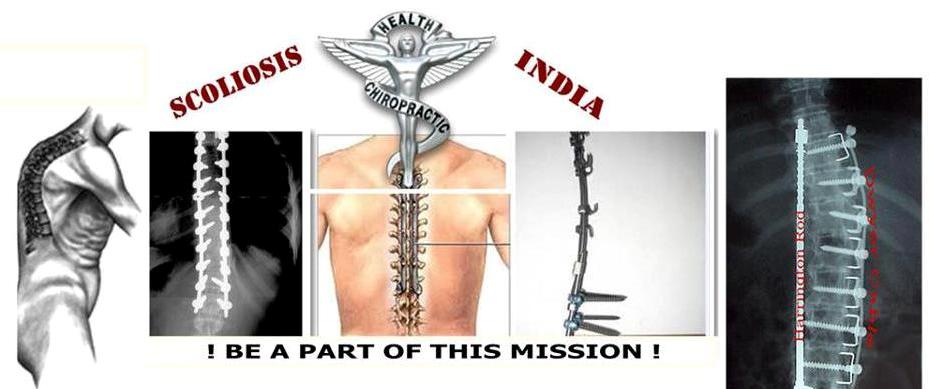Researchers at Texas A&M University have developed a new titanium shape memory alloy that could improve the success rates and significantly reduce the complications of conventional treatments utilizing spinal screw and rod systems for early-onset scoliosis.
Scoliosis is defined as a sideways curvature of the spine that occurs most often during a person's growth spurt just prior to puberty. Such a condition can eventually lead to severe physical deformity in addition to pulmonary and cardiac problems. Early-onset scoliosis refers to spine deformity that is present before a person is of 10 years of age.
Children diagnosed with early-onset scoliosis often spend their childhood undergoing multiple surgical procedures to amend the unnatural curve in their spine. In conventional surgical procedures, spine surgeons implant metallic growing rods in the spine and expand them in bi-annual surgeries to keep pace with the child's growth. However, as the child's body grows/moves, a deviation between the mechanical properties of the implants and the bone becomes apparent. This deviation frequently results in complications like implant loosening, bone atrophy from stress shielding, and bone disease near implant extremities. These complications increase the likelihood that the child will need to undergo further complicated surgical procedures to correct or repair the damage such complications can create.
Using a series of thermo-mechanical processing steps, the researchers developed a superelastic adaptive titanium alloy that preserves the strength and adds flexibility to the implants without compromising the mechanical properties. The new implant allows the natural movement of the body to occur as it can self-adjust depending on the stress applied by the growing spine.
The alloy permits its rods to bend at the ends and stay stiff in the middle as it is 5x more flexible than any other currently available rod system and possesses stress-dependent elastic properties that gradually decrease as the stress on it is increased. This reduces the friction and stress on the patient's spine allotting them more natural movement.
Furthermore, the research team has designed the adaptive alloy to have bio-inert constituents, less sensitivity to impurities and inclusions, better corrosion resistance, more stable fatigue response and predictable fatigue life.
Source : Health Point Capital , 10th Feb 2016
Scoliosis is defined as a sideways curvature of the spine that occurs most often during a person's growth spurt just prior to puberty. Such a condition can eventually lead to severe physical deformity in addition to pulmonary and cardiac problems. Early-onset scoliosis refers to spine deformity that is present before a person is of 10 years of age.
Children diagnosed with early-onset scoliosis often spend their childhood undergoing multiple surgical procedures to amend the unnatural curve in their spine. In conventional surgical procedures, spine surgeons implant metallic growing rods in the spine and expand them in bi-annual surgeries to keep pace with the child's growth. However, as the child's body grows/moves, a deviation between the mechanical properties of the implants and the bone becomes apparent. This deviation frequently results in complications like implant loosening, bone atrophy from stress shielding, and bone disease near implant extremities. These complications increase the likelihood that the child will need to undergo further complicated surgical procedures to correct or repair the damage such complications can create.
Using a series of thermo-mechanical processing steps, the researchers developed a superelastic adaptive titanium alloy that preserves the strength and adds flexibility to the implants without compromising the mechanical properties. The new implant allows the natural movement of the body to occur as it can self-adjust depending on the stress applied by the growing spine.
The alloy permits its rods to bend at the ends and stay stiff in the middle as it is 5x more flexible than any other currently available rod system and possesses stress-dependent elastic properties that gradually decrease as the stress on it is increased. This reduces the friction and stress on the patient's spine allotting them more natural movement.
Furthermore, the research team has designed the adaptive alloy to have bio-inert constituents, less sensitivity to impurities and inclusions, better corrosion resistance, more stable fatigue response and predictable fatigue life.
Source : Health Point Capital , 10th Feb 2016

No comments:
Post a Comment